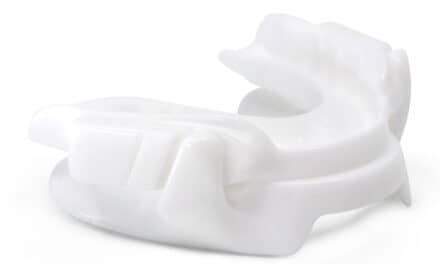A Diplomate shares his management, marketing, and networking advice.
There are many models that dentists can follow to integrate dental sleep medicine into their practices. My journey into dental sleep medicine is probably not much different than others, but I hope by sharing some of my experiences, other dentists will be better able to obtain the personal and professional achievement that dental sleep medicine can bring.
I have reaped health benefits; I no longer spend the entire day contorting my neck and back doing crowns, implants, and other general dentistry procedures. My staff and my family benefit from the additional revenue the services bring to the practice. And of course, patients receive much-needed treatment for a medical disorder—and the potential to lead more fulfilling lives.
Target Market: Current Patients
An early decision to make is who your target market will be. Will you focus on existing patients? Should you design a social media program that will attract new patients? Or maybe you will decide to develop the model I chose, which is to focus on referral from physicians who diagnose patients with sleep-disordered breathing.
If targeting current patients, raising awareness of your dental sleep medicine expertise can be achieved in many ways.
I’ve learned the hard way that how we present our concerns regarding sleep apnea is important. After all, most patients come to their general dentist for hygiene visits and restorative dentistry. They can perceive your dental sleep medicine efforts to be revenue-motivated. For example, we tried having a hygienist ask every patient four screening questions: do you snore?; has anyone reported that you choke or gasp for air while sleeping?; do you have high blood pressure?; and what is your neck size? But that approach caused us to lose several patients from the practice altogether.
We’ve found that a better approach is to add a question on the health history form asking if the patient had ever been diagnosed with sleep apnea. We follow up by asking: have you been prescribed a CPAP and if so, do you use it? If you are not using a CPAP, are you interested in finding out about alternatives to CPAP therapy? This method has reduced patient apprehension about the subject.
Other recommended strategies include newsletters announcing that your practice is expanding to include managing and treating patients with sleep apnea, updating your website, and placing posters in the office (such as the “Daytime Sleepiness Poster” available for sale from the American Academy of Dental Sleep Medicine), as well as issuing press releases to the community.
Target Market: Physicians
Early in my journey, my goal was to become an American Board of Dental Sleep Medicine Diplomate. So I felt it necessary to treat as many patients as possible. But as we know, it is not easy to attain that goal!
Participating in Medicare became my window into referrals from physicians. (It doesn’t hurt that I live in South Florida with an extremely large 65+ population.) In expanding my practices, I have found many communities unserved by any dentists who participate in Medicare, so being a Medicare-participating dentist for those communities is a phenomenal means to network your developing expertise.
Nurturing physicians as a referral source is just as important after the relationship begins, and it comes in many shapes and forms. It doesn’t necessarily mean bringing them cakes and cookies (though that typically doesn’t hurt).
A physician with whom I have developed a strong referral relationship taught me a good lesson in fostering relationships. Within 15 minutes of meeting, he told me that his major objection to referring patients to dentists is that he would never hear back from the dentist regarding the status of the patient. From that point on, I made it a point to communicate to physicians on a regular basis about the patient’s progress, and I always refer the patient back to the referring physician for evaluation once I believe the patient had achieved maximum medical improvement.
There are so many different directions you can go in to develop and grow a prosperous dental sleep medicine practice. No matter how you proceed, there will always be successes and failures along the way; learn from both. Set specific goals and know that perseverance is the key to realizing those goals.
[sidebar] Continue this discussion in person at the 2019 AADSM Annual Meeting. Mogell is presenting on practice management, marketing, and network development from 12:15 – 1:30 pm on June 9 (room number to be decided; check the program closer to the date). [/sidebar]
Kenneth A. Mogell, DMD, DABDSM, has practiced general, neuromuscular, and cosmetic dentistry for over 25 years. He is a member of Sleep Review’s editorial advisory board.





